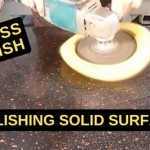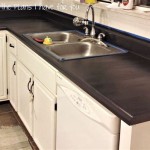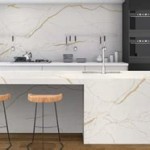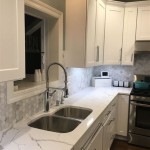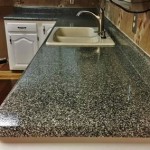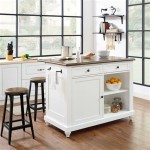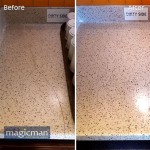How Much Do Marble Kitchen Countertops Cost?
Marble kitchen countertops are a highly sought-after feature in both residential and commercial properties, known for their luxurious aesthetic and timeless appeal. However, the decision to install marble countertops involves a significant financial investment. Understanding the various factors that influence the final cost is crucial for budget planning and making an informed decision. This article provides a comprehensive overview of the costs associated with marble kitchen countertops, detailing the elements that contribute to price variations and offering insights into selecting the right option for individual needs and preferences.
The cost of marble countertops is not solely determined by the material itself. Many variables come into play, including the type of marble, the complexity of the countertop design, fabrication processes, installation needs, and regional price variations. A careful examination of these factors is essential for anyone considering adding marble to their kitchen.
Factors Influencing the Cost of Marble Countertops
Several key factors directly impact the overall cost of marble kitchen countertops. These factors span from the inherent properties of the marble itself to the labor involved in fabrication and installation.
Type of Marble: This is a primary determinant of price. Marble is available in a wide range of varieties, each possessing unique veining patterns, color variations, and geographical origin. More exotic and rare marble types generally command higher prices due to their scarcity and unique aesthetic qualities. For example, Carrara marble, known for its soft gray veining and white background, is often more affordable than Calacatta marble, which features bolder, dramatic veining and a brighter white background. Statuario marble, another highly prized variety known for its exceptional purity and striking veining, typically represents the higher end of the price spectrum.
The geological factors surrounding marble formation influence its rarity and availability. Certain quarries produce marble that is more difficult to extract, resulting in increased production costs. Variations in the mineral composition also affect the durability and porosity of the stone, impacting its resistance to staining and etching. These characteristics directly influence the desirability, and subsequently the price, of different marble types.
Slab Size and Thickness: Marble is sold in slabs, and the size of the slab required for a particular countertop project directly influences the cost. Larger countertops, islands, or kitchens will necessitate larger slabs, potentially increasing the total material cost. Thicker slabs, typically 3 cm (1 1/4 inches) in thickness, provide greater structural integrity and a more substantial aesthetic, but they also contribute to a higher price tag compared to thinner 2 cm (3/4 inch) slabs. The thicker slabs require more material, hence a larger investment.
Consideration must also be given to waste. Fabricators typically add a margin for unusable portions of the slab due to imperfections or cuts necessary for the countertop's design. Optimizing the layout to minimize waste can help control costs, but it may require compromises in design or seam placement.
Fabrication Complexity: The complexity of the countertop design significantly influences fabrication costs. Intricate edge profiles, such as ogee or bullnose edges, require specialized machinery and skilled craftsmanship, leading to higher fabrication charges. Cutouts for sinks, cooktops, and other fixtures also add to the complexity and labor involved in the fabrication process. The number of seams required to join marble pieces also plays a role. Fewer seams offer a cleaner look but may necessitate larger, more expensive slabs. More seams can reduce material costs but require meticulous seam matching and professional installation to ensure a seamless appearance.
The use of specialized equipment, such as CNC machines for precision cutting and shaping, also impacts fabrication costs. These machines ensure accuracy and minimize imperfections, but their operation requires skilled technicians and adds to the overall expense. The time spent on hand-finishing and polishing the edges also contributes to the labor costs associated with fabrication.
Installation Costs: Professional installation is crucial for marble countertops to ensure proper support, leveling, and sealing. Installation costs typically include the labor required to transport the marble slabs, prepare the base cabinets, install the countertops, and apply a sealant. The complexity of the installation, such as the presence of complex angles, multiple seams, or difficult access to the kitchen, can influence the labor costs. The experience and skill of the installer are also factors, as more experienced installers may charge higher rates but offer a superior quality of workmanship. Some installers include the cost of removing existing countertops in their estimates, while others may charge an additional fee for this service. It is essential to clarify what is included in the installation quote to avoid unexpected expenses.
Sealing and Maintenance: Marble is a porous material, meaning it can absorb liquids and stains if not properly sealed. Sealing creates a protective barrier on the surface of the marble, preventing liquids from penetrating the stone and causing damage. The cost of sealing marble countertops typically includes the sealant itself and the labor to apply it. Periodic resealing is necessary to maintain the protection, and this should be factored into the long-term maintenance costs. Different types of sealants are available, ranging from penetrating sealants to surface sealants, and the choice of sealant can influence the cost. Maintaining marble countertops also involves regular cleaning with pH-neutral cleaners to avoid etching and damage. Specific cleaning products and methods are recommended to preserve the beauty and integrity of the marble.
Estimating Marble Countertop Costs: A Breakdown
To provide a clearer understanding of the potential investment, a cost breakdown is provided, outlining the general price ranges for each component involved in the installation of marble kitchen countertops. These figures are estimations and can fluctuate based on regional variations, material availability, and the specifications of the project.
Material Costs: Marble slab prices generally range from $40 to $100 or more per square foot. More common varieties like Carrara marble typically fall on the lower end of this range, while rarer and more exotic types like Calacatta or Statuario can easily exceed $100 per square foot. The price is generally determined on a per-slab basis, and the size and quality of the slab will influence the overall cost. When estimating material costs, it is important to factor in the amount of marble required for the entire countertop area, as well as any extra material needed for seams, overhangs, or custom features. Obtaining multiple quotes from different suppliers can help ensure competitive pricing and access to a wider selection of marble varieties.
Fabrication Costs: Fabrication costs can vary widely depending on the complexity of the design and the skill of the fabricator. Generally, expect to pay between $30 to $80 per square foot for fabrication. This cost includes cutting the marble slab to the required dimensions, shaping the edges, creating cutouts for sinks and appliances, and polishing the surface. Intricate edge profiles, such as ogee or waterfall edges, will increase the fabrication costs due to the additional labor and machinery required. Seams also add to the fabrication complexity, especially if precise seam matching is desired.
Installation Costs: Installation costs typically range from $10 to $30 per square foot, depending on the complexity of the installation and the experience of the installer. This cost includes transporting the marble slabs to the site, preparing the base cabinets, installing the countertops, leveling the surface, and sealing the marble. Complex installations, such as those involving multiple seams, custom angles, or difficult access, can increase the labor costs. It is essential to hire a qualified and experienced installer to ensure proper support and alignment of the countertops. A poorly installed countertop can lead to cracks, uneven surfaces, and other structural issues.
Sealing and Maintenance Costs: The initial cost of sealing marble countertops is generally between $5 to $15 per square foot. This cost includes the sealant itself and the labor to apply it. Periodic resealing is necessary, typically every 1 to 2 years, to maintain the protection. The cost of resealing is usually lower than the initial sealing, as it involves a simpler application process. Regular cleaning with pH-neutral cleaners is also essential to prevent etching and staining. Specific marble cleaning products can be purchased at a cost of $10 to $30 per bottle, depending on the brand and type. Avoiding harsh chemicals and abrasive cleaners is crucial to prevent damage to the marble surface.
Tips for Managing Marble Countertop Costs
While marble countertops represent a significant investment, there are several strategies to manage the cost without compromising on the desired aesthetic and functionality.
Compare Quotes from Multiple Suppliers: Obtaining quotes from multiple suppliers and fabricators is crucial for ensuring competitive pricing. Different suppliers may offer varying prices for the same type of marble, and their fabrication costs can also differ significantly. Comparing quotes allows for informed decision-making and the opportunity to negotiate better pricing. Be sure to inquire about any discounts or promotions that may be available. Also, clarify what is included in each quote, such as delivery, installation, sealing, and any additional services. A detailed comparison of quotes will help identify the best value for the project.
Consider Less Expensive Marble Varieties: Choosing a less expensive marble variety can significantly reduce the overall cost. Carrara marble, for example, is generally more affordable than Calacatta or Statuario marble. While it may not have the same dramatic veining as the more expensive varieties, Carrara marble still offers a beautiful and elegant look. Exploring different marble options and comparing their prices can help identify an affordable alternative that meets the desired aesthetic criteria. Consider the color and veining patterns that best complement the kitchen design and choose a marble variety that strikes a balance between cost and appearance.
Optimize Slab Layout to Minimize Waste: Optimizing the layout of the countertop design to minimize waste can help reduce material costs. Work closely with the fabricator to create a plan that maximizes the use of the marble slab and minimizes the need for extra material. Consider the placement of seams and cutouts to ensure that they are strategically positioned to minimize waste. In some cases, it may be possible to use remnants from other projects to fill in smaller areas or create decorative elements. Open communication with the fabricator is essential to develop an efficient layout plan that minimizes waste and reduces the overall material costs.

How Much Do Marble Countertops Cost In 2025 Com

Slab To Install How Much Do Marble Countertops Cost

How Much Do Marble Countertops Cost 2025 Homeguide

Prefabricated Marble Countertop Los Angeles Crema Marfil Carrara White Top Stone Kitchen Countertops

How Much Do Marble Countertops Cost Bob Vila

Slab To Install How Much Do Marble Countertops Cost

Comparing Costs Granite Vs Quartz Marble Countertops

Marble Kitchen Countertops Classic Elegance And Modern Style In Your

2024 Er S Guide Average Cost For Marble Countertops

Slab To Install How Much Do Marble Countertops Cost
See Also

